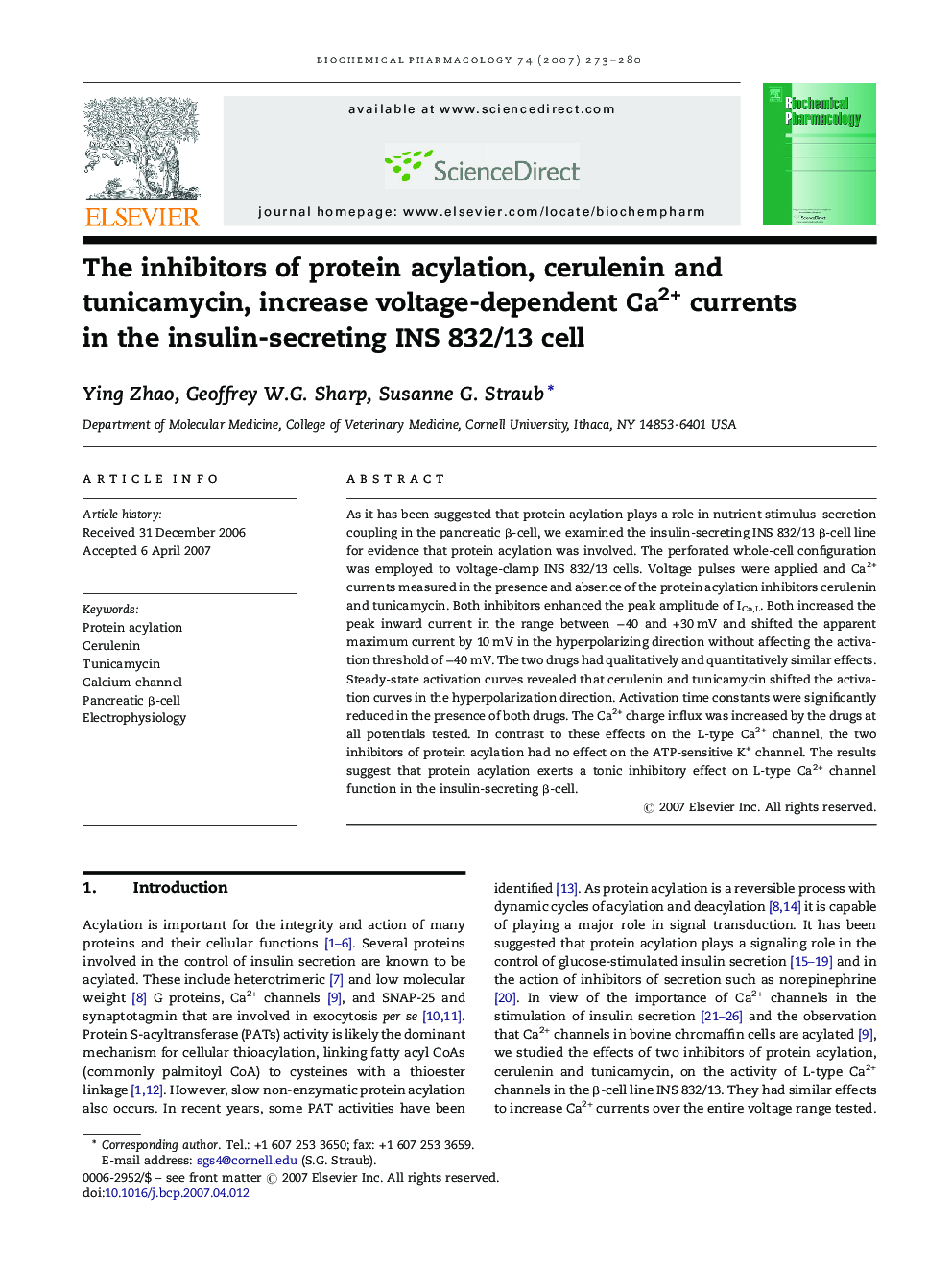| Article ID | Journal | Published Year | Pages | File Type |
|---|---|---|---|---|
| 2515470 | Biochemical Pharmacology | 2007 | 8 Pages |
As it has been suggested that protein acylation plays a role in nutrient stimulus–secretion coupling in the pancreatic β-cell, we examined the insulin-secreting INS 832/13 β-cell line for evidence that protein acylation was involved. The perforated whole-cell configuration was employed to voltage-clamp INS 832/13 cells. Voltage pulses were applied and Ca2+ currents measured in the presence and absence of the protein acylation inhibitors cerulenin and tunicamycin. Both inhibitors enhanced the peak amplitude of ICa,L. Both increased the peak inward current in the range between −40 and +30 mV and shifted the apparent maximum current by 10 mV in the hyperpolarizing direction without affecting the activation threshold of −40 mV. The two drugs had qualitatively and quantitatively similar effects. Steady-state activation curves revealed that cerulenin and tunicamycin shifted the activation curves in the hyperpolarization direction. Activation time constants were significantly reduced in the presence of both drugs. The Ca2+ charge influx was increased by the drugs at all potentials tested. In contrast to these effects on the L-type Ca2+ channel, the two inhibitors of protein acylation had no effect on the ATP-sensitive K+ channel. The results suggest that protein acylation exerts a tonic inhibitory effect on L-type Ca2+ channel function in the insulin-secreting β-cell.
